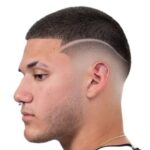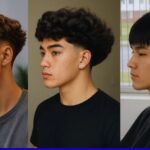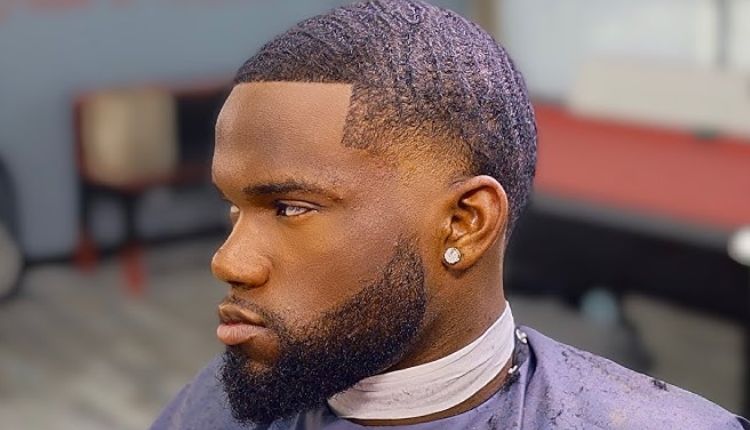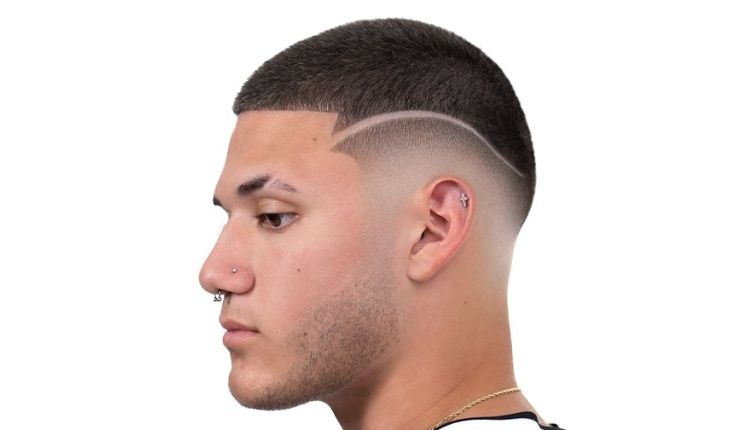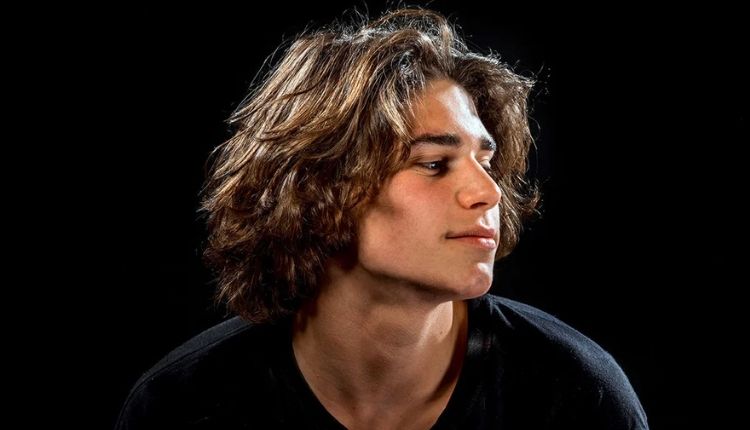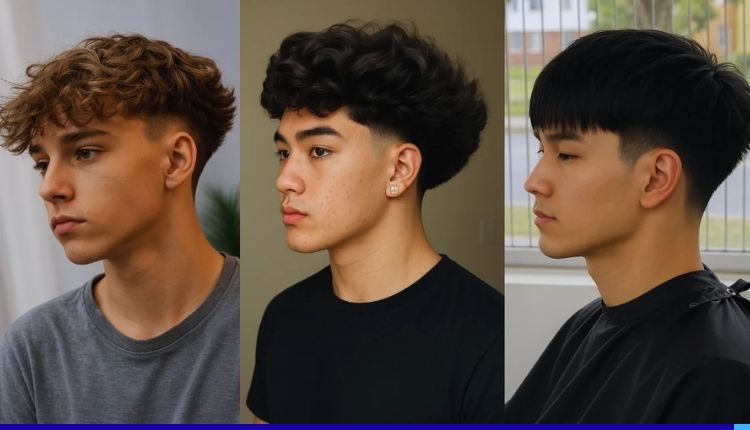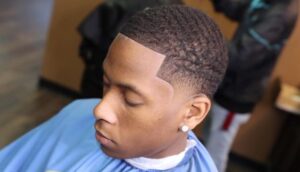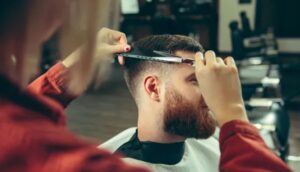This technique creates an easy transition that provides shape and definition to the mid taper vs high taper. Among the unique taper patterns, the mid taper and excessive taper stand out as two typically requested versions. Each brings a unique flair and suitability depending on face shape, way of life, and personal style.
What is a Mid Taper vs High Taper
The mid taper vs high taper is characterised by the way it transitions, beginning midway between the temple and the ear. This way, the fade starts off at a medium peak on the edges and lower back of the pinnacle, creating a balanced and diffused assessment among the pinnacle hair and the faded facets. It is a relatively flexible alternative that works properly with maximum hairstyles, such as curls, waves, comb-overs, slick backs, and pompadours. The mid-taper is a pass-to choice for men who want a current but not too dramatic look.
It gives a neat and clean appearance without exposing too much of the scalp, making it appropriate for both expert and informal environments. The mid taper additionally comprises various hair textures and densities, supplying sufficient room to preserve quantity whilst preserving the perimeters tidy. Its centre-ground method permits barbers to personalise the fade based on the client’s head form and styling choices.
What is a High Taper Fade
The high mid taper vs high taper starts off evolving lots higher up on the head, normally near the temples or even above the ears. This style functions as a more dramatic comparison between the longer hair on top and the sharply dwindling aspects. The high taper creates a bolder and edgier appearance that provides greater emphasis to the hairstyle’s higher element. It is good for people seeking to make a declaration or seeking a fashion-forward look.
This fade is often visible in excessive fashion and concrete hairstyles, frequently paired with tight curls, high-top fades, textured vegetation, and mohawks. Because of its sharp and putting nature, the excessive taper fade requires extra maintenance and frequent journeys to the barber to maintain its form and crisp strands intact. It is especially flattering for men with strong jawlines or angular face shapes because it accentuates the bone structure and provides height to the overall profile.
Face Shape Considerations for Mid Taper vs High Taper
When selecting between a mid taper and a mid taper vs high taper, the form of the face plays a massive role in determining which fashion can be most flattering. For those with oval or heart-shaped faces, the mid-taper fade gives a balanced appearance that enhances gentle curves and mild jawlines. It doesn’t elongate the face too much and allows for a more herbal silhouette.
On the other hand, individuals with spherical or square face shapes would possibly benefit from an excessive taper fade. The excessive placement of the fade elongates the face and adds height, giving the phantasm of a slimmer and extra angular look. However, this can also range, relying on how the pinnacle is styled, as an extra extent on top will beautify these effects even more.
Hair Texture and Thickness Impacts
Hair texture and density are important elements when figuring out a mid-taper and an extreme taper. For thick or curly hair types, the excessive taper fade can help do away with extra bulk and make styling more conceivable. The sharper fade additionally defines curls extra prominently and draws interest to the pinnacle, in which most of the volume is living.
For straight or great hair types, the mid taper is often a more forgiving and flexible option. It continues long enough in on the sides to provide the illusion of fuller hair, which can be mainly useful for people with thinning hair. Additionally, the mid taper’s mild combo minimises scalp exposure, making it appear much less severe as compared to the high taper.
Maintenance and Mid Taper vs High Taper
Maintenance is a crucial issue while deciding on a taper fashion. The mid taper vs high taper generally grows out more evenly, taking into consideration a longer period between barber visits. It’s extra slow, a combination mask that allows new growth to grow higher and maintains the haircut, keeping it neat through the years. This makes the mid-taper a practical preference for guys who opt for low-protection grooming.
Conversely, the excessive taper fade needs greater upkeep. Because of its sharp traces and excessive contrast, any hair growth will become more important in speed. To hold the fade crisp and smooth, everyday trims are vital, typically every 3 weeks. This may be a consideration for people with a hectic way of life or limited access to expert grooming services.
Styling Versatility and Personal Expression
Styling flexibility is another crucial difference between mid and excessive tapers. The mid-taper serves as a versatile canvas for a wide variety of seams. Whether you need to have it slicked back for a formal event or allow it to waft freely, the mid taper accommodates each pattern without overpowering the general appearance.
The excessive taper, at the same time as being extra dramatic, allows for bolder and extra expressive hairstyles. It creates a described silhouette that’s ideal for statement-making designs, such as specified line work, difficult parts, or textured spikes. If self-expression and individuality are top priorities, the high taper offers a more bold and pleasing solution.
Cultural Influence and Popularity
Both mid and high mid taper vs high taper have a located reputation throughout numerous cultures and communities. The mid-taper fade is normally visible in classic barbershop settings and has an undying attraction, preferred by way of experts and traditionalists. Its adaptability to formal and semi-formal settings has made it a staple in mainstream grooming.
The high taper fade, in assessment, has deep roots in hip-hop, streetwear, and concrete subculture. It is frequently featured in runway suggestions, song videos, and social media posts. Celebrities and influencers regularly wear this fashion to push limitations and redefine contemporary aesthetics. The cultural importance of each style plays a role in how it is perceived and why individuals pick one over the other.
Barber Skills and Mid Taper vs High Taper
Executing a proper mid taper vs high taper whether mid or excessive, requires skill and precision. A gifted barber will take into account not only the fade top but also the blend, form of the head, and the hair’s herbal growth sample. The fade has to look seamless and symmetrical, with clean strains and easy transitions.
High tapers require, specifically, sharp attention to detail, especially on the grounds that they involve extra dramatic contrasts. The slightest inconsistency can throw off the symmetry and look unpolished. Mid tapers, even as extra forgiving, still require mastery to achieve an easy gradient without harsh lines.
Final Decision: Which One Is Right for You
Choosing between a mid taper and an excessive taper in the end comes all the way down to your man or woman possibilities, way of life, and grooming habits. If you need a fade that’s balanced, versatile, and smooth to maintain, the mid taper is in all likelihood the perfect match. It suits most face shapes and works properly with a huge variety of hairstyles.
If you’re after a more competitive, style-ahead fashion that commands attention, the excessive taper offers the ambitious assessment and aspect you’re seeking out. It’s ideal for individuals who need to stand out and don’t mind the extra effort to hold the look clean.
Conclusion
The war between mid taper vs high taper and high-taper fades isn’t about which one is better universally, but which one aligns better with your personality, style, dreams, and hair kind. Both styles are modern-day, elegant, and impactful in their own ways. With information on their differences in fade top, upkeep, styling options, and suitability, you could make a knowledgeable preference that elevates your grooming recreation and complements your usual appearance. Whether you pick the subtle sophistication of a mid taper or the ambitious depth of a high taper; the key’s inside the self-assurance with which you put it on.
